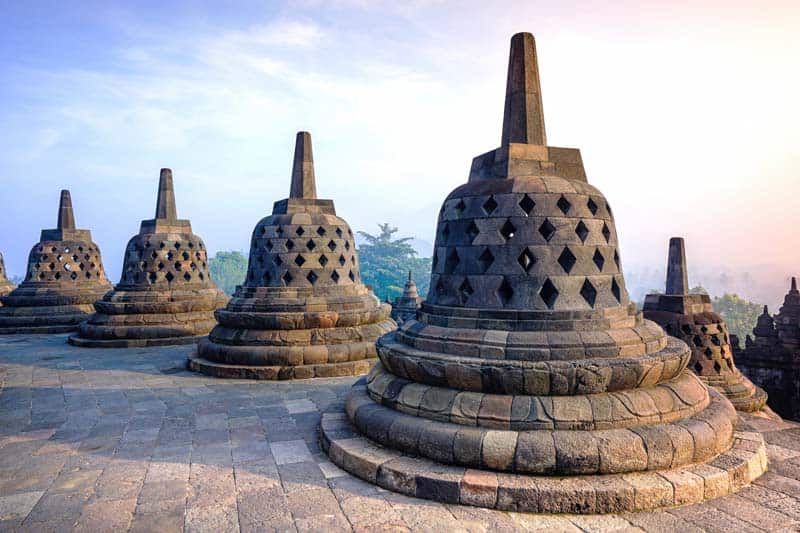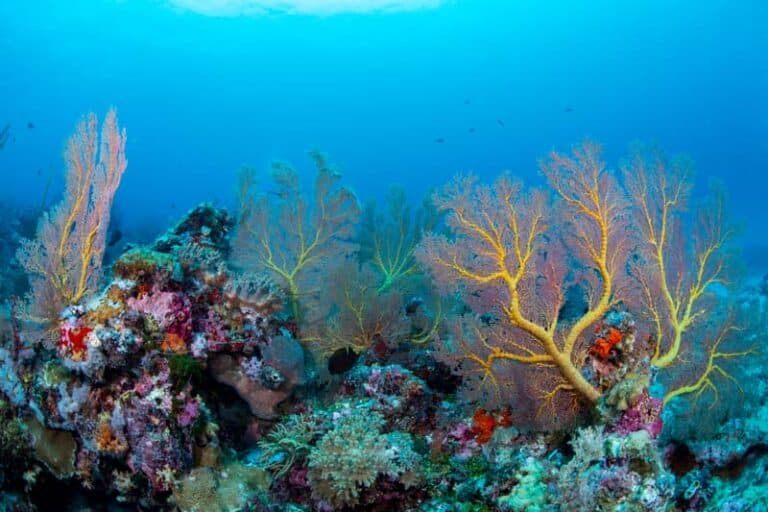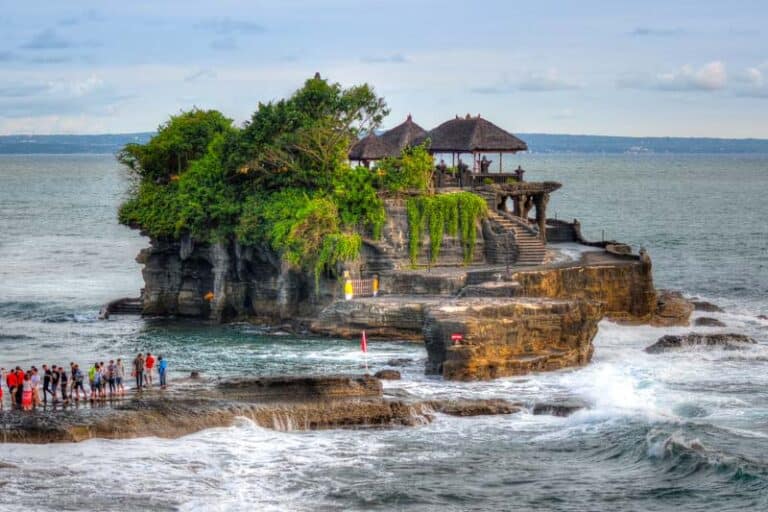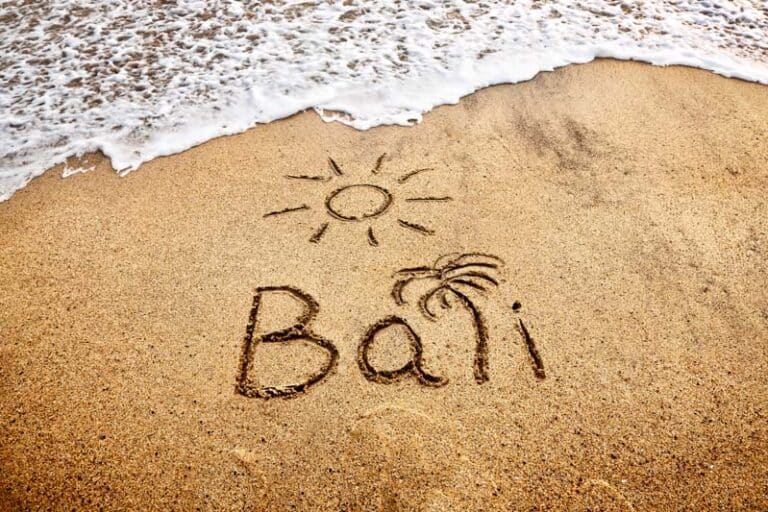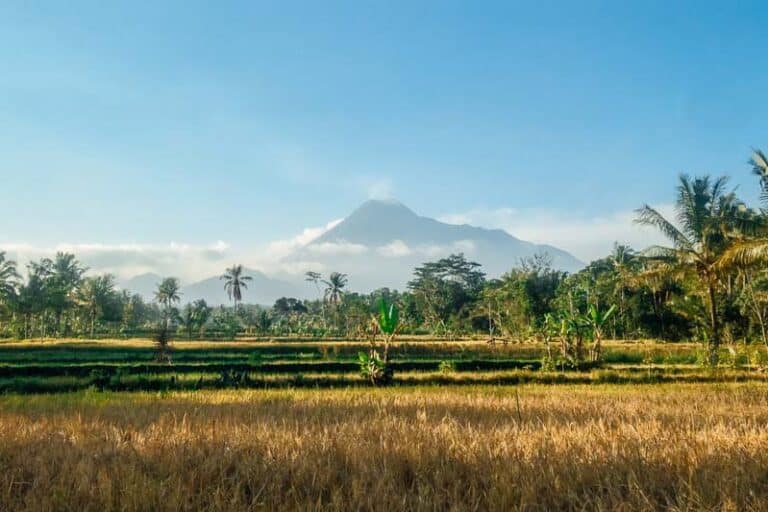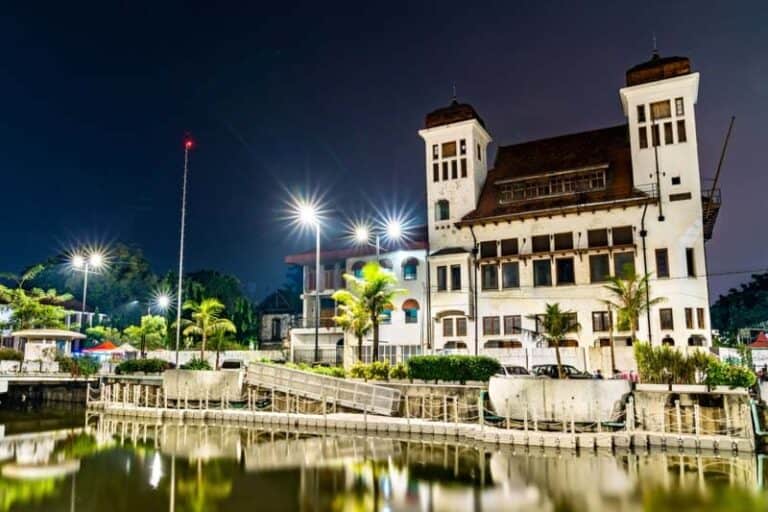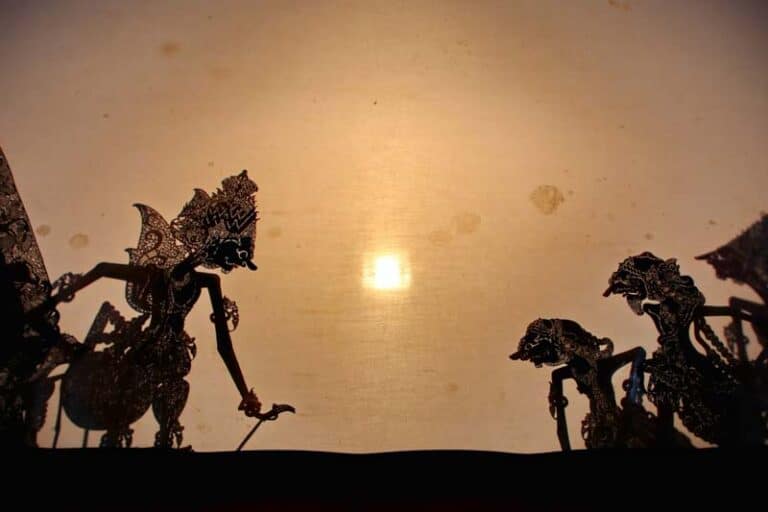Imagine standing at the foot of an ancient wonder, its stone walls whispering tales of history and mystery. Welcome to Borobudur Temple, a breathtaking architectural marvel nestled in the heart of Indonesia.
There are fascinating facts you should know before embarking on your journey to this UNESCO World Heritage Site. From its symbolic significance to its unique features, this article will unveil the secrets of Borobudur, ensuring your visit is nothing short of extraordinary.
- Borobudur Temple is the largest Buddhist temple in the world
- It was built in the 9th century and represents the stages of enlightenment
- The temple is adorned with intricate carvings and reliefs, showcasing exceptional craftsmanship
- Visitors can enjoy panoramic views from the top of the temple and explore hidden chambers with sacred relics and statues.
Historical Background of Borobudur Temple
As a tourist, you’ll want to know the historical background of Borobudur Temple. This magnificent temple is located in Central Java, Indonesia, and is considered one of the greatest Buddhist monuments in the world.
The temple was built in the 9th century during the reign of the Syailendra dynasty. The temple was constructed as a symbol of the Buddhist universe, with its nine stacked platforms representing the stages of enlightenment. Each platform is adorned with intricate relief carvings that depict scenes from Buddhist teachings and everyday life during that era.
The construction of Borobudur took decades to complete and involved thousands of workers. Over time, the temple was abandoned and forgotten until it was rediscovered in the 19th century.
Today, it stands as a UNESCO World Heritage Site and attracts visitors from all over the world who are captivated by its rich history and mesmerizing beauty.
Architectural Marvel of Borobudur Temple
Get ready to be amazed by the incredible architecture of Borobudur temple. This ancient masterpiece is a true feat of engineering and artistry.
Here are three reasons why the architecture of Borobudur temple is truly remarkable:
- Scale and Size: Standing at a height of 115 feet, the Borobudur temple is the largest Buddhist temple in the world. Its sheer size and magnitude are awe-inspiring, with over 2 million stone blocks used in its construction.
- Symmetry and Proportions: The temple is meticulously designed with a precise geometric layout. Each level follows a symmetrical pattern from the base to the top, creating a harmonious and balanced structure.
- Carvings and Reliefs: The intricate carvings and reliefs that adorn the temple’s walls depict stories from Buddhist teachings. These meticulously carved stone panels showcase the high level of craftsmanship and attention to detail of the artisans who built the temple.
Visiting Borobudur temple is an unforgettable experience that will leave you in awe of its architectural brilliance.
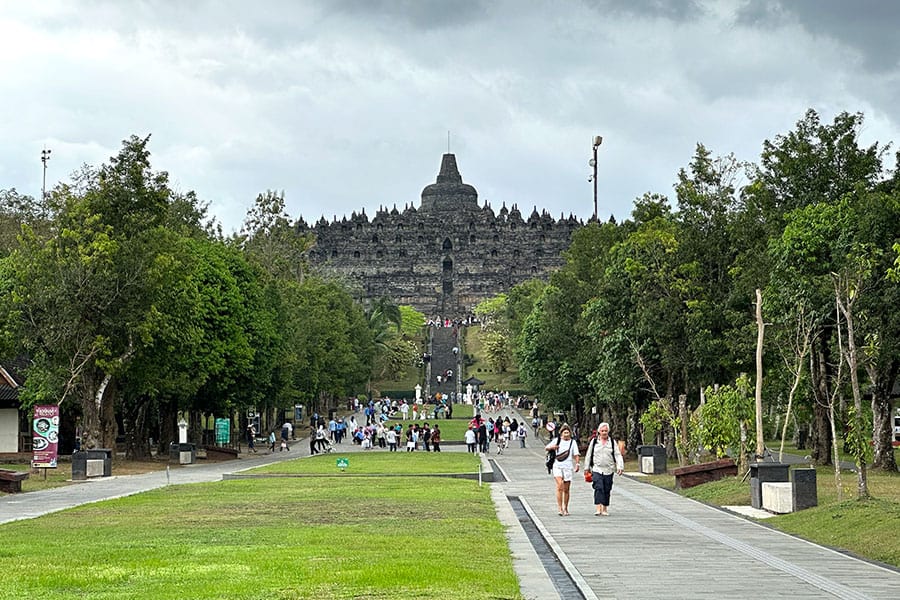
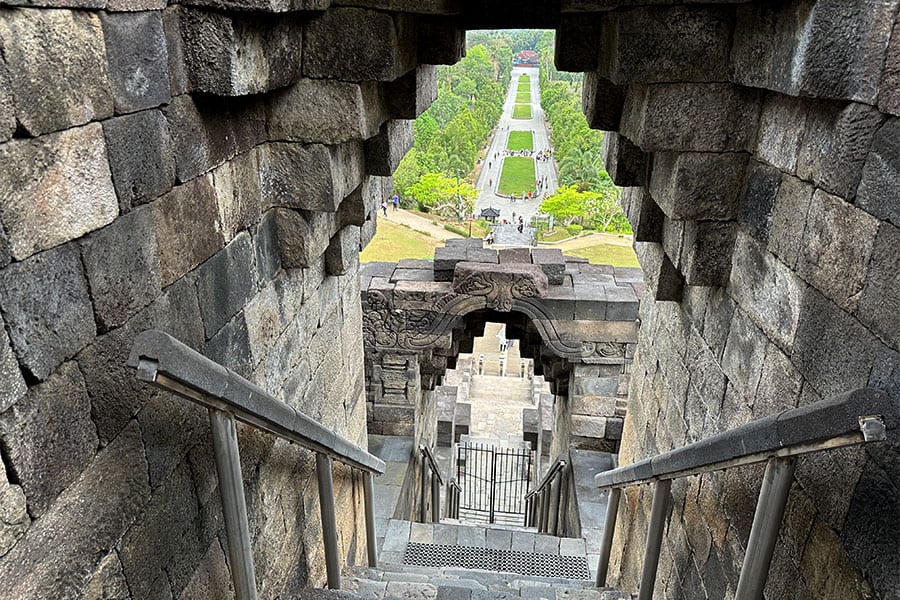
Symbolism and Meaning Behind Borobudur Temple
Immerse yourself in the rich symbolism and profound meaning behind the intricate carvings and reliefs of the Borobudur temple. As you explore this magnificent structure, you’ll discover that every detail holds significance.
The temple is designed in the shape of a mandala, representing the universe and the path to enlightenment. The base of the temple symbolizes the earthly realm, while the upper levels represent the spiritual realm. Each level is adorned with intricately carved reliefs that depict stories from Buddhist teachings.
These reliefs not only showcase the artistic talent of the ancient craftsmen but also serve as a visual guide to Buddhist philosophy. From the stories of the past lives of Buddha to the teachings of compassion and wisdom, the carvings unravel the journey toward enlightenment.
As you witness the beauty and depth of the carvings, you’ll gain a profound understanding of the Borobudur temple’s spiritual significance.
Unique Features of Borobudur Temple
Take a moment to appreciate the intricate architecture and design of Borobudur temple, a UNESCO World Heritage site. Here are three unique features that make this temple a must-visit destination:
- Massive Structure: Borobudur temple is the largest Buddhist temple in the world, standing at a towering height of 9 stories. Its sheer size and grandeur are awe-inspiring, with over 2,500 relief panels and 504 Buddha statues adorning its walls.
- Hidden Chambers: Within the temple are hidden chambers containing sacred relics and statues. These chambers were discovered during restoration, adding an air of mystery to the temple complex.
- Panoramic Views: As you ascend to the top of Borobudur temple, you’ll be rewarded with breathtaking panoramic views of the surrounding lush landscapes. From here, you can see the majestic Mount Merapi and the fertile plains of Central Java.
Visiting Borobudur temple is an experience like no other, where you can immerse yourself in the rich history and marvel at its unique features.
The Borobudur Experience: Sunrise vs. Sunset
Experiencing either the sunrise or sunset at Borobudur temple offers a breathtaking view of the surrounding landscape, casting a golden glow over the ancient ruins and creating a magical atmosphere.
As the sun rises or descends, the temple’s intricate stone carvings come to life, telling stories of ancient civilizations and religious beliefs. The vibrant colors of the sky blend harmoniously with the temple’s majestic structure, creating an awe-inspiring sight that will leave you speechless.
During sunrise, the temple slowly emerges from the shadows, revealing its grandeur as the first rays of sunlight illuminate the surroundings.
In contrast, during sunset, the temple transforms into a silhouette against the vibrant sky, creating a mesmerizing backdrop for photography enthusiasts.
Whether you choose sunrise or sunset, witnessing this spectacle at Borobudur temple is an experience you’ll never forget.
Practical Tips for Your Visit
-
Plan Your Visit in Advance
Research Borobudur’s opening hours, entrance fees, and any special events or ceremonies during your visit. -
Choose the Right Time
Arrive early in the morning or late in the afternoon to avoid crowds and the scorching midday sun. Sunrise and sunset visits can be particularly stunning. -
Buy Tickets in Advance
Purchase your entrance tickets online or from authorized ticket sellers to avoid long lines at the ticket counter. ticketcandi.borobudurpark.com -
Dress Modestly
Wear clothing that covers your shoulders and knees as a sign of respect for the temple’s religious significance. -
Footwear
Be prepared to remove your shoes before entering the temple grounds. Wear comfortable slip-on or easily removable shoes for convenience. -
Guided Tours
Consider hiring a local guide who can provide historical and cultural insights, enhancing your understanding of the temple. -
Climbing the Temple
Be cautious when climbing the steep steps of Borobudur. Use handrails and take your time to prevent accidents. -
Photography
Photography is allowed, but be mindful of others. Refrain from using flash to preserve the delicate carvings. -
Essentials
Carry sunscreen, a hat, sunglasses, and a refillable water bottle to protect yourself from the sun and stay hydrated.
Enjoy your visit to Borobudur temple and immerse yourself in its rich history and spirituality.
Visit official website borobudurpark.com
